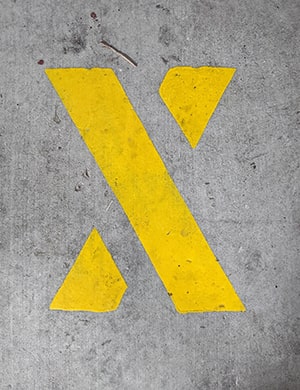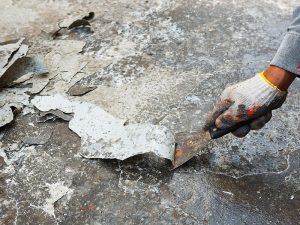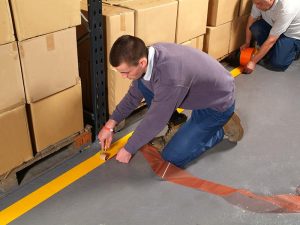The Disadvantages of Line Marking Paint
PermaStripe
Thinking of paint for your next demarcation solution for your workplace floor? We discuss the disadvantages of line marking paint here.
Line marking paint is a perfect solution for specific areas. For concrete floors intended for outdoor sports, car parks and external storage bays, the choice of paint is obvious.
Thermoplastic resin is used for road surfaces due to the requirement of maximum durability required. Closing off roads means disruptions in the form of lots of traffic, so no arguments there. The safety of workers comes first.
For internal surfaces, while paint is a valid option, you could argue that there are more suitable solutions available.
The main issue with paint is application and curing time… I also need to add durability and replacement. We can go into more detail with these below.
Line Marking Paint Application
Paint cannot simply be applied to a surface. To create a floor marking system using floor marking paint, every detail must be scrutinized to the fullest to prevent misapplication. Misapplication can cause many setbacks.
Stencilling


Now, like all floor marking solutions, a floorplan must be made. This is unavoidable but can be done without impacting productivity in the area intended for marking. The issue with paint, like resin, is that it is not produced in pre-made sizes and widths. The first issue with floor paint is stencilling. Stencilling is required to ensure that all lines that are to be applied will be neat and match the intended dimensions. This process, while worthwhile in getting right to ensure correct results, is tedious. Line marking paint applicators are an option, and while these are not expensive, the reduction in control can result in errors which waste time and money.
Working in Sections
Workplace floor marking can be implemented in sections, but this is not the most effective or efficient method. For example, if you have two working areas and the processes of one cannot be temporarily moved into the other. You have two options, completely close off the area or complete sections at a time. No matter which way you approach it, work in that area or section needs to stop completely, as no one can work around masking the area ready for stencilling. If any of the masking becomes scuffed or stepped on, it needs to be re-done, which can involve cleaning again.
Preparation
Once the area is stencilled, it then needs to be painted. Correct preparation before this makes the actual paint application more straightforward and quicker. No work can be done in an area or section while the paint is being applied, as again one scuff or misstep can result in re-paints.
Drying Time
After painting comes drying or curing time. This is a critical moment, as not only will the paint require time to dry, which can vary depending on temperature, but the area will likely not be allowed to be entered due to fumes. Work will not be permitted to continue if health and safety regulations are to be followed, as the area or section will be considered toxic and a hazard to workers health.
In summary, paint, while potentially suitable for areas with long-standing processes, is not ideal for busy facilities that do not have space available to move operations around it. Paint can result in long periods of production downtime for prep, application and drying times.
Line Marking Paint Maintenance
If you decide that paint is indeed your floor marking preference, then once you have prepped, applied and allowed the time need for it to dry, maintenance from then on becomes an important factor.


Your paint application will be vibrant and will do its job very well, for a time. After that, the cracks will start to show. Sections will wear off simply due to foot and vehicle traffic, any surface impacts or scrapes will altogether remove paint, and eventually, it will look a complete mess that needs re-painting. Should your working processes change every so often your floor markings, regardless of condition, will need to be replaced. With this comes productivity downtime, floor marking paint removal, via cleaning solvents or painting back to a blank canvas.
Whether it’s repair or process change, the prep, apply and dry process will need to happen again, no matter what the scale. I repeat that with paint, regardless of it being a section or entire area requiring a re-paint, it will at least need to be closed off for the drying process due to fumes.
It’s worthwhile considering the pros and cons of all options when deciding on your next floor marking solution.
Consider Floor Marking Tape?


PermaStripe®, PermaRoute® and PermaLean® remove the necessity of the many additional steps required with paint. Our floor marking tapes are produced in rolls of various widths, sizes of many shapes and many colours. For application, all that is recommended is a clean, dry surface. In many cases, an area can still be used during application. There is no drying time, no ventilation required, simply stick down and continue. If replacement is needed, then remove, clean if necessary and apply some more. For larger areas, a floor plan is recommended, and the use of our floor marking tape applicator is optional.
